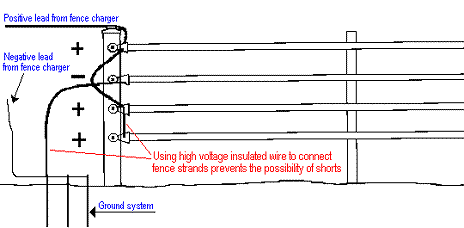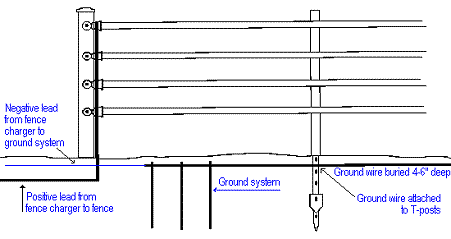Subtotal $0.00
Resources
Safe Fence -Improving Poor Ground System
| Dry or barren ground is a poor conductor of electricity. Voltage returning to the fence charger will decline substantially in these conditions. In arid regions or sandy soil areas it may be necessary to install grounding around the fence to achieve maximum fence efficiency. You may ground one of the strands of fence, or the best solution is to run bare galvanized wire just below the surface of the ground, attached to each post, for optimum functionality. |
 Grounding
a strand of fence provides direct connection to the fence charger when the
animal contacts both the negative and positive strands of fence at the same
time. Because this is a direct connection, the earth's ability to return
voltage to the ground system is by-passed, avoiding the limited ability
of dry, arid soil to return voltage to the fence charger. Grounding
a strand of fence provides direct connection to the fence charger when the
animal contacts both the negative and positive strands of fence at the same
time. Because this is a direct connection, the earth's ability to return
voltage to the ground system is by-passed, avoiding the limited ability
of dry, arid soil to return voltage to the fence charger. |

A ground wire buried along the length of the fence line and attached to the T-posts extends the reach of the ground system. Voltage has to travel only a short distance to return to ground. The ground wire is best buried 4-6" below ground level. It may also lay on the ground stretched tight, but will present the risk of a horse pawing and hooking the wire on a shoe or in the pastern joint-exposing the horse to potential injury. |
| TIP: When burying your ground rods they should be 4"-6" under the surface of the earth. A coffee can, with a slot to run the ground wire through, can be placed over the end of the rod and then back-filled for added safety. |








